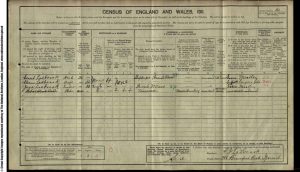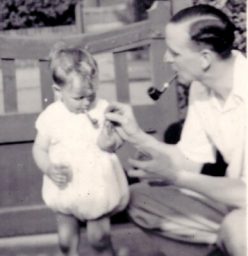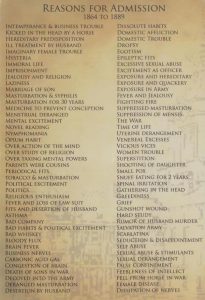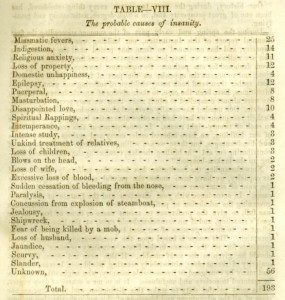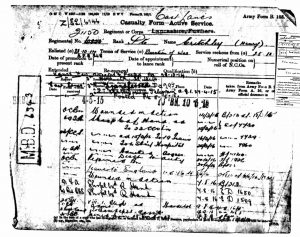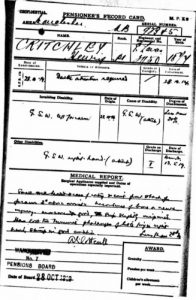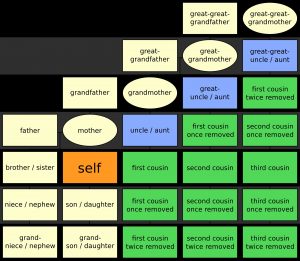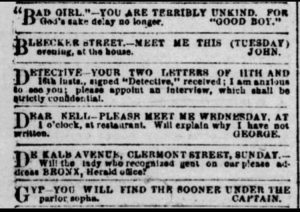Introduction of General Registration
Prior to General Registration in 1837 the government depended upon the church to record population details and record baptisms and burials etc. However it soon became apparent the only records that were recorded were when the church had had an involvement with that individual ie they had baptised a child or buried a person. Therefore all people that did not come into contact with the church had no records! So general registration was introduced so all births, marriages and deaths could be recorded not just baptisms, marriages and burials.
Although general registration was brought in in 1837 there was some misunderstanding and people thought that baptism was the same as registering the birth of the child, so, in 1874 it became compulsory to register a birth within 6 weeks or you would be fined. A birth certificate contains valuable information – particularly parents’ names.
All entries are collated and registered locally and every three months the registrar for the area sends the information to the General Records Office (GRO). The GRO produce an indexed list for all registration districts and divide the year into quarters. Someone born in January, February or March will be shown in the indexes as born in the March quarter. Bear in mind someone born for example at the end of March may be shown in the registers for the April-June quarter as it is when the birth is registered not the date of birth that indicates which quarter the entry will appear in. This also applies the deaths.
GRO Entry Quarters
January-March: shown as March quarter
April-June: shown as June quarter
July-September: shown as September quarter
October-December: shown as December quarter
Birth Certificates
The information recorded on a full birth certificate is:
• Registration District & Sub District
• Register number
• When & where born (time also given if multiple births)
• Name
• Sex
• Name & Surname of Father
• Name & Maiden Name and previous married surnames of Mother
• Occupation of Father
• Description & Residence of informant
• Date Registered
• Details of name/s entered after Registration
There are two types of birth certificate a full certificate which will show the details as per above, however a short certificate only shows the name and date of birth of the child, their gender and where the birth was registered, a short certificate is issued free at the time of registration, whereas you need to pay a fee for a full birth certificate.
Where the fathers name was missing from the birth certificate it implied illegitimacy. From 1875 the reputed father HAD to be present at the registration to consent to his name being added. Illegitimacy may also be proved by a subsequent marriage of the parents but in such circumstances you cannot assume that this husband was in fact the father of the illegitimate child, unless there is some other known clue to confirm this.
When a time is given, this may indicate a multiple birth, such as twins or triplets – so look for another child born on the same day to evidence siblings! When extracting the information pay special attention to the address as this will point you in the right direction to find the family in the census returns, directories, poll books or workhouse records.
Birth Certificates for Adopted People
It is important to note that in respect of people who have been adopted there is two birth certificates. The original one with the birth parents details on and upon adoption a second birth certificate is issued with the adoptive parents details on. More importantly you must bear in mind that the two certificates are not linked to each other in any way, therefore protecting the persons original details.
Marriage certificates
A marriage certificate will show :
• Registration District
• Place of Marriage
• Register entry number
• Names of Parties
• Age of Parties
• Status and Occupation
• Residence at time of marriage
• Father’s name & occupation – for bride and groom and deceased if that was the case
• Method of marriage – banns, licence, certificate etc
• Signature or mark of the couple and witnesses
Take note of witnesses – they often tend to be a sibling of the bride or groom!Ages on a marriage certificate can be inaccurate or at the very least suspect. No exact age may be shown and it may simply be recorded that bride or groom was “of full age”. This implies an age in excess of 21 years. This may be incorrect purposely to avoid the bride/groom having to obtain parental consent. Where an actual age is given, it is usually reasonably accurate but it may also have been altered for a variety of reasons.
Be wary of an address which is the same for both parties – this was often used to avoid paying two sets of banns fees if the bridge or groom lived in a different parish.
Marriages usually took place in the parish of the bride.The absence of a father’s name and occupation usually meant he was unknown, although the columns may have been left blank as a matter of course. This may be a good clue to two possibilities, that of illegitimacy or that the father was dead at the time of the marriage. If the father was dead then the word deceased was usually written alongside it. The inclusion of the name of the father without the word deceased did not automatically mean that he was alive at the time of the marriage.When searching for a marraige record assume there are 30 years between generations and assume men married around 25 yrs old and women around 20 yrs old, perform wide ranging searches to view the most results. Most importantly do not assume anything until you have the relevant certificate evidencing an event, such as the details of the fathers from a marriage certificate.
Death Certificates
These carry the least information from a genealogical point of view but they are nevertheless important sources particularly when the interest is concerned with the cause of death in relation to hereditary conditions etc. it is also valuable when trying to locate wills and other probate documents.
Death Certificates usually include the following information:
• Registration District & Sub District
• Register number
• When & Where Died
• Name & Surname
• Sex
• Age (including statement of parentage in the case of a child)
• Occupation (including that of the husband of a married woman or widow)
• Cause of Death
• Description & Residence of Informant
• When Registered
From 1837, the only information requested was Date and place of death, name, age, sex, occupation, and cause of death.
In 1969, the information showed, date and place of birth, address and, if the deceased was a married woman, her maiden name.
Although up to 1874, the onus on registering a death was placed on the registrar, the information was provided by an informant. Later it was the responsibility of the next of kin or closest relative of the deceased to ensure the death was registered.
You will find causes of death described in various ways, e.g. fever, turn of life, decay, water on the head, decline and other strange sounding causes!
Beware of inaccurate ages on death certificates. Often informants were not sure or did not know how old someone was and so they guessed. The Coroner is usually the informant in the case of a violent or unusual cause of death where an inquest took place. If a death certificate reveals such information, then look further for local newspaper reports of the inquest and also see if a Coroner’s report has survived.
Where to find a birth, marriage or death certificate
A birth, marriage, death or adoption certificate can be found/ordered from the GRO, this will show the registration district of the entry and the GRO reference number to allow you order a copy. There are other places you can locate a certificate such as some commercial websites . However if you know enough about the person then you can view a copy/order at the register office where the event was registered. If you choose to do it manually you can go to your local library who hold microfiche copies of these entries and you can take the details from the microfilm if you don’t wish to purchase a copy of the certificate.
What advantages would a genealogist in Scotland have over one in England during 1855?
The most useful additions to Scottish certificates are: in a birth certificate – the details of the parent’s marriage – so you don’t need to do any research to find their marriage – on a marriage certificate – the mothers and fathers details of both the bride and groom not just the fathers details as with English ones and on death certificates – the names of the deceased’s mother and father.
In Scotland during the first year of registration in 1855 certificates also provided other details: birth certificates showed the parents ages and place of birth, details of other siblings, marriage certificates showed the bride and grooms usual place of residence and details of any previous marriages, death certificates showed where the deceased was born, married and buried but also details of all living and deceased brothers and sisters. Unfortunately all this extra information only applied during 1855 as the amount of work would not permit its continuance.
Other ways to find out about births, marriages and deaths other than certificates are by:
· Searching on the internet/newspapers and looking for announcements (more relative to more recent events), announcements often name other family members and provide dates and locations of events.
· The IGI website has millions of records transcribed from original parish records, bishop’s transcripts etc plus user submitted family trees.
· By researching Parish Registers where the christening, marriage or burial took place.
· Family recorded events often noted down in a family bible.
· Other online public Family Trees – often you will find more than one person researching your ancestor and may have the same individual in their tree – always check for an original source and don’t presume!
The importance of analysis of original records
It is important to view an original document as often this will provide extra details that don’t appear in an indexed document. For example from analysis of a birth certificate you can identify a father’s name and mother’s maiden name from this you can often guess when they married, then search for a marriage with those surnames, which upon identification of the marriage certificate leads to the parents ages at marriage (giving an idea of where to look for their birth) and where they lived (good indication of where to find them in the census’s) and details of their fathers/parents.
Often the informant of an event or witness to a marriage is a relative of the bride or groom. Therefore it is vital you pay attention to all information you discover from this original source which means it is correct and not subject to mis-transcription or presumption. Many records are transcribed by people who are not local to an area or even country, so something that is obvious to someone familiar with a name, area or country can often be mistranscribed unintentionally.
Some websites such as Ancestry allow you to make an edit note if you find a mistranscription – this note will not alter the mistranscription but will return this record on a search based on the edited information. For example if someone was mistranscribed as Ann Archer and she should have been Ann Acker adding the correct name of Acker will return Ann Archer on a search.
Please follow and like us:
